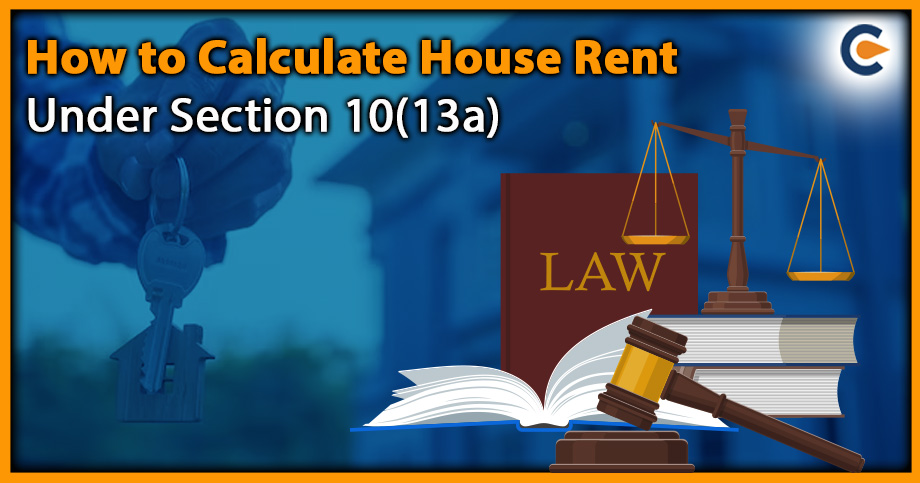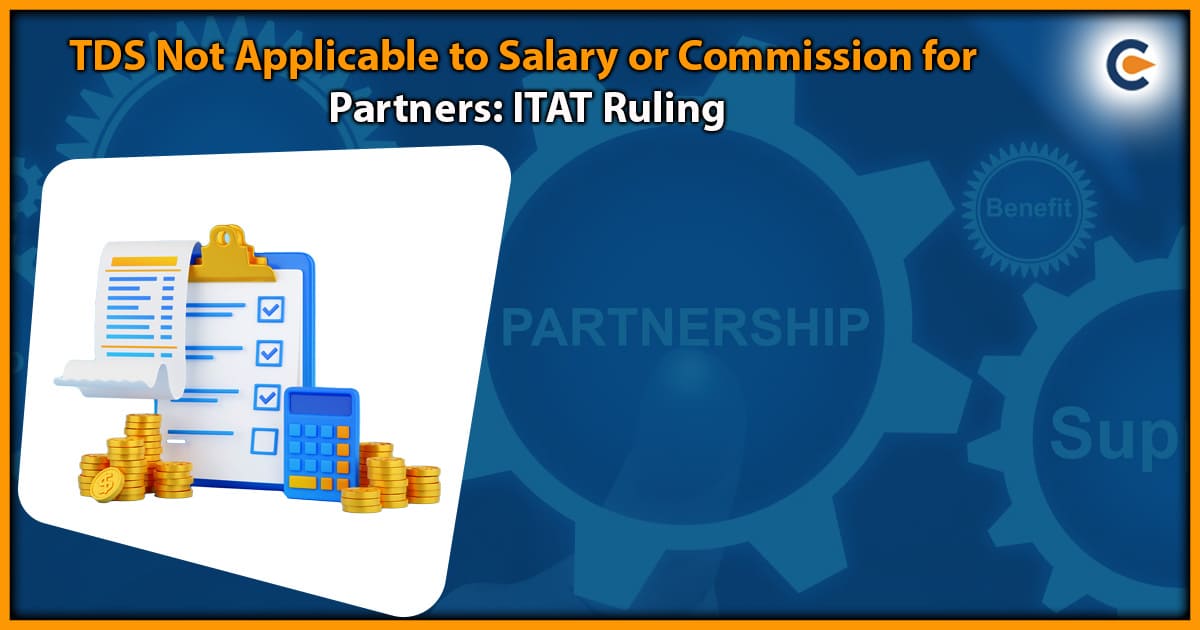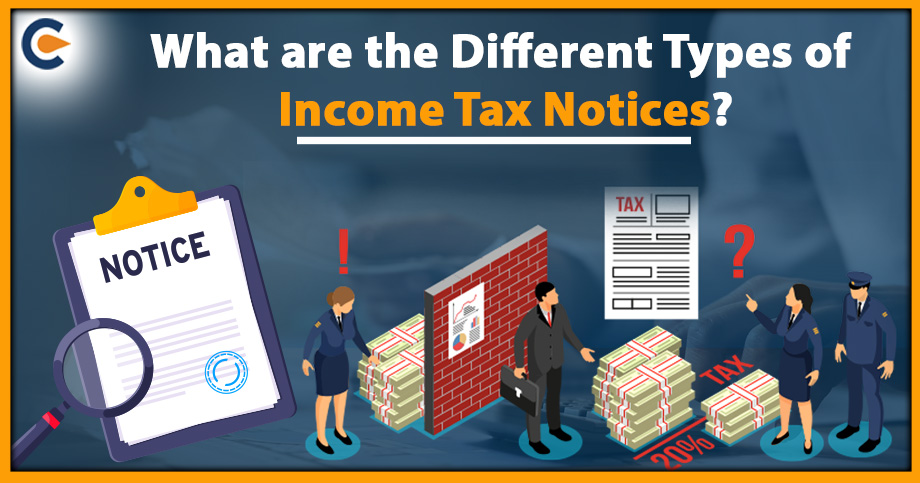According to the Income Tax Act, “house rent” refers to the amount paid as rent for a residential accommodation occupied by the employee, either wholly or partly, for his/her own residence. The rented accommodation can be either furnished or unfurnished.
House rent includes any payments made towards rent, such as monthly rent, advance rent, security deposit or any other payment relating to the use or occupation of the rented accommodation. However, it does not include any payment made towards amenities like electricity, water supply, gas, furniture, or maintenance charges.
To claim exemption under Section 10(13a) of the Income Tax Act, the employee must be paying rent for a residential accommodation which is not owned by him/her, their spouse or minor child, and the rental payments should be supported by proper rent receipts and rent agreement, if applicable.
What Does the Section10 (13a) Of Income Tax Act Talks About?
Section 10(13a) of the Income Tax Act provides for an exemption in respect of House Rent Allowance (HRA) received by an employee from their employer, subject to certain conditions. HRA is a component of the salary given by the employer to the employee to meet the expenses incurred by the employee towards rent of the accommodation they reside in.
Under Section 10(13a), the exemption on HRA is available to an employee if they are paying rent for a residential accommodation which is not owned by them, their spouse or minor child, and they are not receiving rent-free accommodation from the employer. The exemption is also subject to certain limits and conditions.
The exemption amount is calculated as the least of the following three amounts:
- Actual amount of HRA received by the employee from their employer;
- Rent paid minus 10% of the employee’s basic salary; and
- 50% of the basic salary if the rented accommodation is situated in metro cities (Delhi, Mumbai, Kolkata, or Chennai) or 40% of the basic salary if it is located in any other city.
- The balance amount of HRA, if any, is added to the employee’s taxable income and is subject to tax as per the applicable income tax slab.
How Do You Calculate The House Rent According To Section 10(13a) Of The Income Tax Act 1961?
Under Section 10(13a) of the Income Tax Act, an employee can claim exemption on the House Rent Allowance (HRA) received from their employer, subject to certain conditions.
To calculate the amount of HRA that is exempt from tax, the following steps need to be followed:
- Determine the actual amount of HRA received from the employer during the year.
- Calculate the total rent paid during the year for the rented accommodation. This should include the rent paid for the period when the employee was occupying the rented accommodation.
- From the total rent paid, subtract 10% of the employee’s basic salary. The basic salary includes the basic pay, dearness allowance (if any), and any other commission received by the employee.
The least of the following three amounts is exempt from tax:
a. Actual HRA received from the employer
b. Rent paid minus 10% of basic salary
c. 50% of basic salary if the rented accommodation is in metro cities (Delhi, Mumbai, Kolkata, or Chennai) or 40% of basic salary if it is in other cities.
The balance amount of HRA received is added to the taxable income of the employee and is taxed as per the applicable income tax slab.
Note that if the employee does not pay any rent, or if the rented accommodation is owned by the employee or not occupied, then the entire amount of HRA received is taxable.
What Is The Formula For Calculating House Rent Allowance (HRA)?
The formula for determining the amount of House Rent Allowance (HRA) exemption is as follows:
Least of the following:
Actual HRA received from employer
Rent paid minus 10% of basic salary
50% of basic salary if the rented accommodation is situated in metro cities (Delhi, Mumbai, Kolkata or Chennai), or 40% of basic salary if it is located in any other city.
Here is an example to illustrate how to determine HRA:
Let’s assume that Mr. Kumar, an employee, is receiving a monthly HRA of Rs. 15,000. He is paying a monthly rent of Rs. 25,000 for his rented accommodation in Mumbai. His basic salary is Rs. 60,000 per month.
Step 1: Actual HRA Received From Employer
The actual HRA received by Mr. Kumar in a year is Rs. 15,000 x 12 = Rs. 1, 80,000.
Step 2: Rent Paid Minus 10% of Basic Salary
Mr. Kumar paid a total rent of Rs. 25,000 x 12 = Rs. 3, 00,000 in a year. 10% of his basic salary is Rs. 6,000 per month, which comes to Rs. 72,000 per year. Therefore, the rent paid minus 10% of basic salary is Rs. 3, 00,000 – Rs. 72,000 = Rs. 2, 28,000.
Step 3: 50% of Basic Salary for Metro Cities
Since Mr. Kumar’s rented accommodation is located in Mumbai, which is a metro city, the exemption limit is 50% of his basic salary. Therefore, 50% of his basic salary is Rs. 30,000 per month, which comes to Rs. 3, 60,000 per year.
Step 4: Calculate the Least of the Three Amounts
From the above calculations, we can see that the least amount is Rs. 1, 80,000 (the actual HRA received from the employer). Therefore, Mr. Kumar can claim an HRA exemption of Rs. 1,80,000 and the remaining Rs. 1,20,000 (Rs. 3,00,000 – Rs. 1,80,000) will be added to his taxable income and taxed as per the applicable income tax slab.
Conclusion
In conclusion, the House Rent Allowance (HRA) exemption under Section 10(13a) of the Income Tax Act is available to employees who are paying rent for a residential accommodation that is not owned by them, their spouse or minor child, subject to certain limits and conditions. The exemption amount is calculated as the least of actual HRA received, rent paid minus 10% of basic salary, and 50% or 40% of basic salary depending on the location of the rented accommodation. The balance amount, if any, is added to the employee’s taxable income and taxed as per the applicable income tax slab.
Read Our Article: Income Tax Return E-Filing: Things You Must Know











